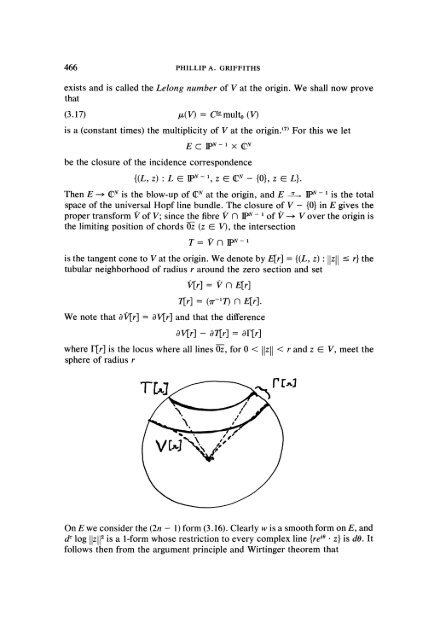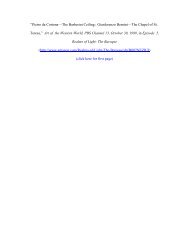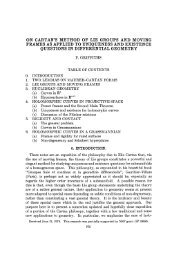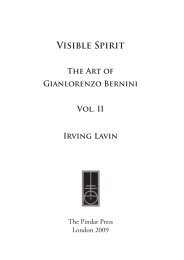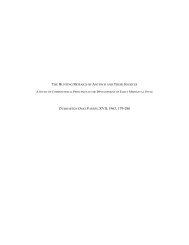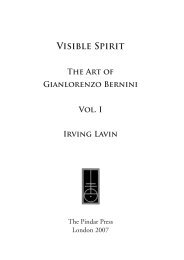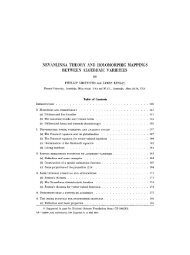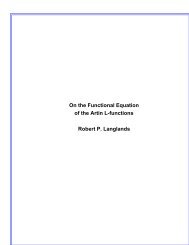View PDF - Project Euclid
View PDF - Project Euclid
View PDF - Project Euclid
Create successful ePaper yourself
Turn your PDF publications into a flip-book with our unique Google optimized e-Paper software.
466 PHILLIP A. GRIFFITHS<br />
exists and is called the Lelong number of V at the origin. We shall now prove<br />
that<br />
(3.17) /x(V) C te mult0 (V)<br />
is a (constant times) the multiplicity of V at the origin. (r For this we let<br />
E c IpN-1<br />
be the closure of the incidence correspondence<br />
{(L,z)’L IPu-a,z u-- {0},Z L}.<br />
Then E --0 {U is the blow-up of Gu at the origin, and E N- is the total<br />
space of the universal Hopf line bundle. The closure of V {0} in E gives the<br />
proper transform of V; since the fibre 9 & N- of g over the origin is<br />
the limiting position of chords 0z (z V), the intersection<br />
T= 9 N-1<br />
is the tangent cone to V at the origin. We denote by r] {(L, z) ilzll r} the<br />
tubular neighborhood of radius r around the zero section and set<br />
r] 9 r]<br />
r] (- r].<br />
We note that Or] Or] and that the difference<br />
0r] 0r] 0r[r]<br />
where Fir] is the locus where all lines 0z, for 0 < ilzll<br />
sphere of radius r<br />
T<br />
< r and z V, meet the<br />
On E we consider the (2n 1) form (3.16). Clearly w is a smooth form on E, and<br />
d log Ilzll is a 1-form whose restriction to every complex line {re ’. z} is dO. It<br />
follows then from the argument principle and Wirtinger theorem that


